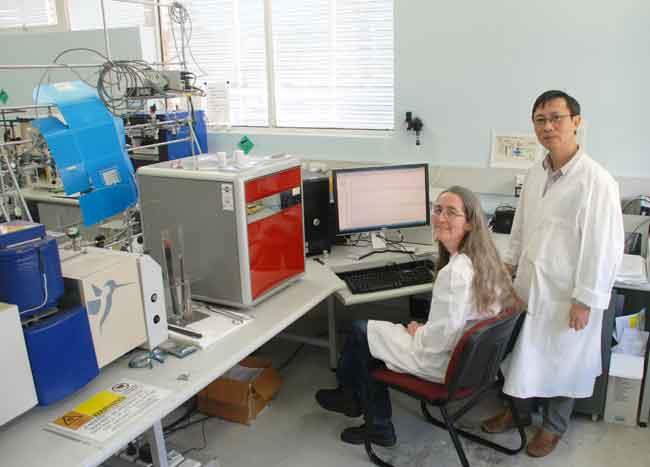

Published on the 24th September 2018 by ANSTO Staff
Radiocarbon dating and isotopic analysis of Antarctic moss shoots at ANSTO has contributed to new research - by the University of Wollongong, the Australian Antarctic Division and ANSTO - showing for the first time that vegetation in the Windmill Islands, East Antarctica is changing rapidly in response to a drying climate.
The mosses reveal a colder, windier and drier climate as reported in a landmark 13-year study published today (25 September 2018) in Nature Climate Change.
Antarctic mosses are tiny and grow very slowly, but their tissues maintain a record of the environmental conditions during growth. Small changes in microclimate (temperature, precipitation, wind or humidity) can impact vegetation.
The study, led by Senior Professor Sharon Robinson from University of Wollongong’s Centre for Sustainable Ecosystem Solutions, monitored vegetation change from 2000–2013 using digital evaluation of moss health, dated mosses by radiocarbon, measured their stable carbon isotope (δ13C) values, and analysed local and global climate trends for the investigation of ecological effects of Antarctic climate change on plant biology.
The radiocarbon dating of East Antarctic mosses, carried out at ANSTO using accelerator mass spectrometry, allowed the researchers to link the age of the mosses and consequently their growth rates to trends in bioavailable water.
“Radiocarbon (or carbon-14) analysis gives moss chronologies because atmospheric carbon-14 is absorbed and stored in the shoot in a similar way as in tree rings. Although not as visually distinct as tree rings, the temporal radiocarbon record is there” said Principal Environmental Scientist Dr Quan Hua.
“If you have the age and the length of the moss you can work out what the growth rate is over time.”
It was previously known that mosses, which grow extremely slowly and compactly, lay down sequential carbon signals reflecting the environmental conditions during growth.
Intact moss shoots can thus be accurately dated using ‘bomb-peak’ radiocarbon dating. A peak in recent atmospheric radiocarbon occurred when large quantities of artificially-produced carbon 14 were injected into the atmosphere during the period of above-ground nuclear bomb testing mostly in the late 1950s and early 1960s.
Hua, an authority on the radiocarbon dating, has been collaborating with the group at University of Wollongong for more than a decade.
Analyses of isotopic signature of carbon 13 (δ13C) which were undertaken at ANSTO by Linda Barry indicated a trend towards drier conditions in the Windmill Islands and reduced water availability for moss growth.
As reported by the paper authors, ozone depletion since the 1970s has had pronounced effects on Southern Hemisphere climate, with increased wind speeds around Antarctica and lower maximum temperatures across much of East Antarctica.
“When you have higher wind speed, the growth rate of the moss decreases because less water from snow melt is available for the vegetation,” said Hua.
The researchers had previously established that mosses have the potential to record past bioavailable water climates through the assimilation of stable carbon isotopes (12C and 13C) from the atmosphere.
Shoot segments with higher (less negative) δ13C reveal periods when moss was growing under wetter conditions (more submergence).
The investigators reported that a trend towards drier conditions in the Windmill Islands was also evident in δ13C signatures along slow-growing moss shoots of all three species collected from six sample locations.
Cores of long moss shoots of S. antarctici B. ,pseudotriquetrumC. andpurpureus were collected from Clark Peninsula, Bailey Peninsula and Robinson Ridge on the Windmill Islands for the analysis.